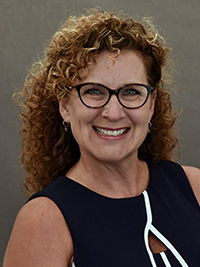How digital patient engagement solutions can help healthcare organizations improve their existing revenue cycle
The rise in healthcare consumerism has led to an increased interest in patients managing their own healthcare through digital technologies.[1] This involves using applications and online portals to schedule appointments, provide information, verify insurance and make payments. This shift toward digital patient engagement is not only empowering for patients but also has significant impacts on the revenue cycle management of healthcare providers.
According to Deepali Narula, the COO of Conifer Health Solutions, “Consumerism is becoming a more significant factor in patients’ decision-making processes regarding healthcare. This applies to both clinical services and administrative aspects of healthcare. While there’s a lot of discussion about digital patient engagement in the market, the specific implementation methods, impact on patients and effects on revenue are not always well understood.”
To address these questions and provide insight into the implementation and effects of digital patient engagement solutions, Conifer sponsored a roundtable discussion at the Healthcare Financial Management Association’s 2023 Annual Conference in Nashville, Tenn. The conversation featured speakers from various healthcare organizations to understand what digital patient engagement solutions are being implemented — and how they may be helping organizations as they look to improve their existing revenue cycle.
When you hear the term engagement, what types of solutions or processes come to mind?
BJ Taylor: We have a hybrid system. We have a virtual access center that handles scheduled patients to try to recapture their information and validate, authorize, certify and verify it all before they come in. We also do that in our emergency rooms — there are QR codes, and they can pre-register in MyChart while they are sitting in the lobby waiting for service. But we also have the traditional face-to-face registration. As much as you try to push people toward electronic versions, you must consider your data integrity. We are currently working on a project to define registration pain points for physical therapy. And the pain points, unfortunately, seem to be in some of the data elements we collect in outpatient service areas and the redundant information we ask of the patient.
Phillip Brooks: The utilization of MyChart and its pre-service clearance, as well as the other systems we’ve tried to put into place, mean that when all the renewals come in the first part of the year, things are a mess. There are multiple payers, which can delay payment. Today, since so many of our patients have cellular phones, we send out text notifications. We haven’t gotten to the point where we can bill them, and they can pay that way — but we’re on the cusp of that.
David Schweer: We are way behind when it comes to making it easy for our customers to work with us, especially when compared to other industries. We have a huge opportunity but, at the same time, we are a human business, and healthcare isn’t as simple as going to Amazon, clicking on something and getting it. There are a lot more factors in play. We don’t have online scheduling yet. We are trying to get payments online — just the ability to see your bill. But it’s challenging across different sites and locations.
Sheldon Pink: We went on a digital transformation journey last year, and I always advise people to assess before they invest. You need to understand your patient population. If your population is elderly and afraid to use the technology, you won’t get the engagement you want. There is a fundamental paradox with patients. They are afraid of the technology, but they want it. They say they want an Amazon experience, but the moment healthcare offers that, they are skeptical of it. So, we think there needs to be an educational process that goes with your digital transformation. You can’t overlook the assessment piece — because you must make sure your organization is ready for the change. You must ensure your infrastructure can manage and support digital engagement the way it needs to be supported. You must deal with the increase in customer calls, where they are asking you, “Why did I get this email? Why did I get this text?” You need to have the staff in place to support it.
What integration areas are most important?
Pink: For patients, it’s self-scheduling. You must spend a lot of time working through your decision trees and even though something may seem logical to you, it may not be the path that the patient selects. It takes a lot of trial and error. For registration, patients come in through the emergency department (ED). For the latter, when you think about digital registration, patients who come into the ED feel like their life is over. They have issues with the app or the Wi-Fi plan on their phone — and you start running into many issues that your ED personnel aren’t prepared to manage.
Schweer: There is a huge opportunity in terms of point-of-service collections. Being able to do that in a tactful, respectful and accurate way, given the amount of high-deductible health plans we have, is an important thing to do. But too often we just say, “Oh, we don’t have that information,” so we don’t even try. We just send a bill, and we lose the opportunity to educate the patient about their plan design.
Jenn Barrett: One of the hardest things we encounter is trying to determine the appropriate type of visit for a patient. We have a lot of patients who are homebound or not available to come into the office certain days of the week. You need a first connection who can say, “Would you prefer a telehealth call or to come into the office?” If it’s the latter, “Can we get your transportation set up?” There are many things that front-end registration must juggle so we can get the important social determinants of health information. It’s an area that we are continuously needing to focus on so we can have the right conversations. Additionally, we have to confirm payment model (coverage through insurance, government or self-pay) so that it isn’t offensive to ask someone their method of payment at time of service.
What factors do you take into consideration when choosing an EHR or other third-party vendor partnerships?
Barrett: You want to have a solid registration. You want to have a health record system that ideally integrates with all demographic and social determinants of health information so when your staff meets with those individuals, it’s easily visible. You don’t necessarily need your clinician to talk to someone about transportation, but you do want them to talk to patients about safe living environments and food equity issues. There are so many parts and pieces that different vendors bring to the table. But the continuous tinkering to have it all work together is an issue.
Brooks: I think the question should be how many vendors you use to accomplish your goals — and whether your information technology department has the bandwidth to support what you need. From what I’ve seen, the answer is usually, “No.”
Taylor: When you have a need, the first thing to do is try to leverage your existing vendors to see if they offer the service you’re shopping for. If so, you already have a business associate agreement in place, as well as an interface built with them. Often, you can just expand on it. There are a lot of start-up vendors out there. Some of them are not going to be here next year. You don’t want to be the guinea pig and none of us have time to teach a new vendor the industry. So, you must be strategic about who you bring on and make sure to measure and monitor the processes once they go live.
Schweer: None of the options out there do everything. You may even have to go to an ancillary level, with different EHRs for different spaces. In the revenue cycle space, you need to think about what problem you are trying to tackle. And understand that you’ll be adding a new application, a new interface and another relationship to manage.
How can healthcare organizations effectively engage patients that don’t embrace technology?
Taylor: Think about when airlines went electronic. Delta put a person out in front of the check-in kiosk to walk you through the process. We did that at our hospitals to try to move some of our population to self-check-in. There are people who like it. We also have iPads that we give out to other patients. If they say no, they don’t want that, they can go to a desk and talk to a person. You can’t eliminate registration staff. That’s a fallacy.
Barrett: We use different platforms to engage users — whether it’s YouTube or other social media platforms. We provide little vignettes covering educational topics and what to expect during your visit, whether it’s in-person or telehealth. From a technological perspective, it’s just a matter of continuously looking for the next thing that’s coming out where you can make those important connections because, so often, patients just don’t know what they don’t know. But we see that people want to consume healthcare differently. That’s why companies like Amazon and others are introducing healthcare platforms and services. But in the hospital or emergency room, [these new technologies] aren’t always going to be an option. But I do believe, in 20 years, the next generation is going to have expectations that they should not have to write anything. They will want to do everything on their laptop or smartphone. From a technological perspective, we must continuously think about what it’s going to be like in 20 years and try to figure out the bridges that will get us there.
Shkysi Cummings: When we moved from paper to electronic, there was massive public relations messaging around it. There was even information on the news because older patients watch the news. We also used the newspaper for older patients and social media platforms for younger people. As we move forward toward whole patient digital engagement, I’m certain we will be doing that again because it was successful.
It’s a journey
After reflecting on the discussion, Narula noted that each organization is undertaking its unique journey in the realm of digital patient engagement. She emphasized that this process requires considerable time and meticulous evaluation to discern the most suitable processes, partnerships and solutions for a specific organization.
Narula said, “Implementing a technology solution isn’t a simple plug-and-play scenario that immediately yields benefits. It’s crucial to grasp the intricacies of workflows and integration points. Furthermore, the introduction of digital patient engagement technologies doesn’t eliminate the necessity for human expertise. It’s essential to invest the time to understand your customers and their needs. By doing so, you can establish meaningful touchpoints and ensure that patients are motivated to choose your organization for their healthcare needs.”
Panelists

JENN BARRETT
Vice president of revenue optimization at COPA Health in Mesa, Ariz.

PHILLIP BROOKS
Vice president of revenue cycle at Hennepin Healthcare in Minneapolis

SHKYSI CUMMINGS
Vice president of operational finance for the Bermuda Hospitals Board in Hamilton, Bermuda

DEEPALI NARULA
COO of Conifer Health Solutions in Frisco, Texas

SHELDON PINK
Vice president of revenue cycle at Luminis Health in Annapolis, Md.

DAVID SCHWEER
COO for Toiyabe Indian Health Project in Bishop, Calif.

BJ TAYLOR
Director of revenue cycle operations at Wellstar Health System in Marietta, Ga.
About Conifer Health Solutions, LLC
Conifer Health Solutions, LLC, a subsidiary of Tenet Healthcare Corporation, brings 35 years of healthcare industry expertise to help health systems and physician practices address their most pressing revenue cycle challenges. The company offers tech-enabled end-to-end and point solution revenue cycle services that help to enhance the patient experience, drive operational efficiency, and improve financial outcomes. Annually, Conifer Health manages 17+ million unique patient interactions, more than $25 billion in net patient revenue and $22.6+ billion in medically managed spend. Conifer Health also provides value-based care services focused on population health management and financial management services for more than five million lives. For more information, visit ConiferHealth.com.
This published piece is provided solely for informational purposes. HFMA does not endorse the published material or warrant or guarantee its accuracy. The statements and opinions by participants are those of the participants and not those of HFMA. References to commercial manufacturers, vendors, products, or services that may appear do not constitute endorsements by HFMA.
[1]. Stoumpos, A., et al., “Digital transformation in healthcare: Technology acceptance and its applications,” International Journal of Environmental Research and Public Health, February 2023.






